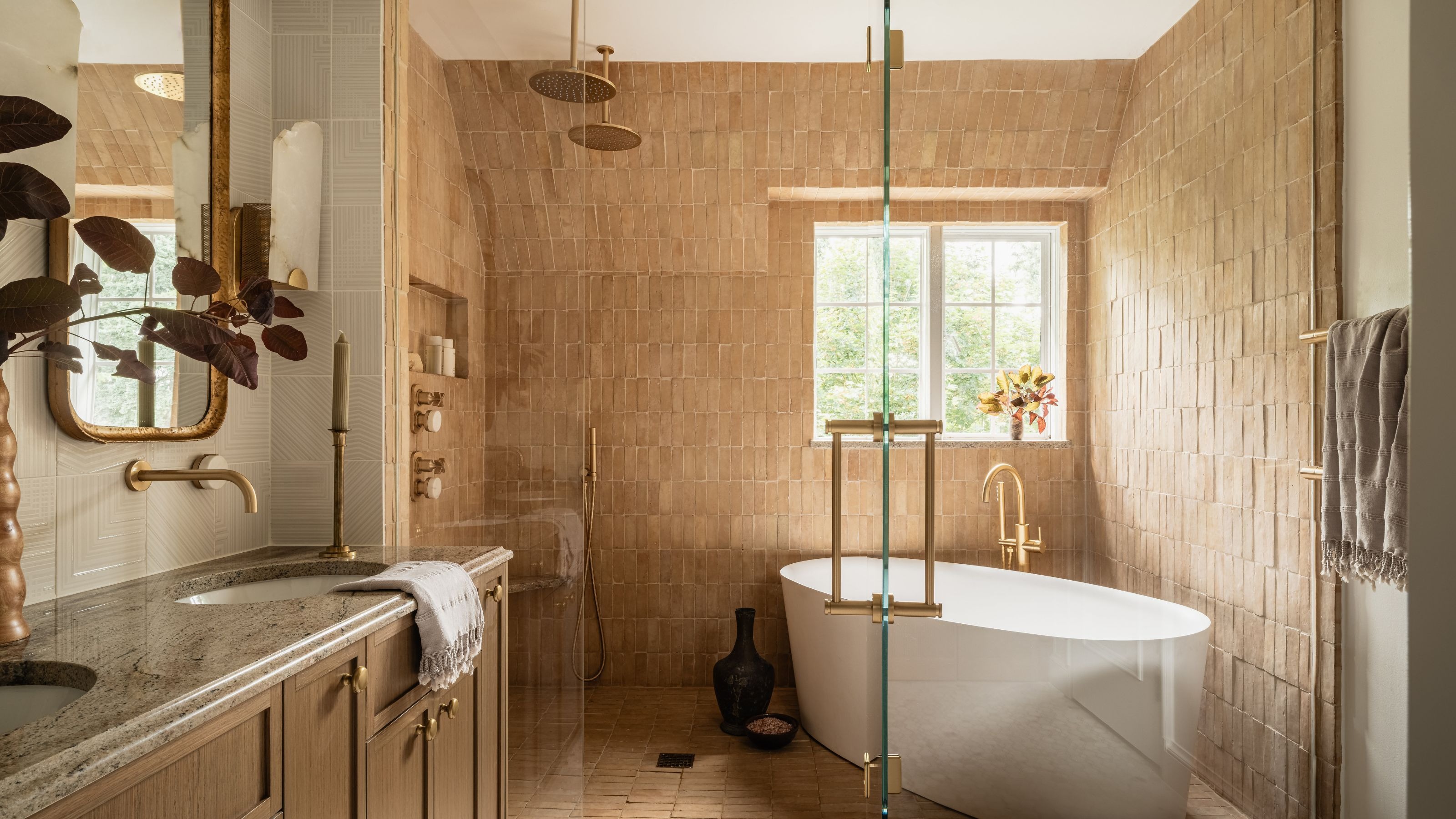Why CAD Is the Secret to Smarter Bathroom Layouts

Designing a bathroom can be one of the most rewarding yet challenging projects in the home. Unlike other rooms, bathrooms have to balance style with strict practicalities. Every inch matters, from the placement of sanitaryware to the choice of tiles, lighting, and storage. Mistakes in planning can quickly become expensive, and homeowners often find that what looked good in their imagination feels very different once it is installed. This is where CAD, or computer-aided design, has become the secret weapon for bathroom layouts. It allows homeowners and designers to visualise a space in extraordinary detail before any work begins, saving time, money, and disappointment.
The Evolution of Bathroom Planning
In the past, bathroom design was often limited to sketches, catalogues, and a great deal of guesswork. While experienced fitters could rely on their knowledge to recommend layouts, homeowners were left to imagine how the final result would look. This approach carried risk. A bath that seemed the perfect size might overwhelm a smaller room, or tiles chosen in a showroom could look completely different once placed across four walls. The arrival of CAD has shifted bathroom planning into the digital age, offering precise measurements, lifelike visuals, and the ability to test ideas before committing to them.
Seeing the Space Before It Exists
One of the greatest advantages of CAD in bathroom layouts is its ability to bring a design to life before a single tile is laid or a fixture installed. Using specialised software, designers can input exact room dimensions and create a virtual model of the space. Homeowners can then see how different layouts will work, whether that means moving a sink to a new wall, swapping a bath for a walk-in shower, or adding built-in storage.
This virtual view helps eliminate the guesswork that has historically made bathroom design stressful. Instead of trying to visualise changes, homeowners can walk through the room on screen and understand how it will feel. This is particularly valuable in the UK, where many homes have bathrooms that are compact or awkwardly shaped. CAD makes it possible to see whether there is enough clearance for doors to open, how much floor space remains after fitting furniture, and whether design choices will actually work in reality.
Choosing the Right Tiles with Confidence
Tiles are one of the most important elements in any bathroom, setting the tone for the entire design. Yet choosing between small or large tiles can be surprisingly difficult. Small tiles can create intricate patterns and work well in tight spaces, but they risk making a room feel busy if overused. Large tiles, on the other hand, can make a bathroom appear bigger and more luxurious, but they may overwhelm a very small room.
CAD takes the uncertainty out of these decisions by allowing homeowners to visualise tile choices on a realistic scale. Designers can apply small or large tiles to the digital model and instantly show how they will look in the actual space. This helps homeowners see whether a bold patterned tile is striking or overpowering, whether a large-format tile adds elegance or simply dominates, and how grout lines will appear across the room. By making these decisions digitally, costly mistakes are avoided and confidence in the final choice is far greater.
Precision in Layouts and Measurements
Bathrooms often come with practical restrictions that limit design freedom. Pipes, windows, sloped ceilings, and door positions all play a role in determining what is possible. CAD ensures that these limitations are factored into the design with precision. The software can map plumbing points, measure clearances, and flag potential issues long before installation begins.
This precision extends to the placement of tiles. CAD tools allow designers to plan where grout lines will fall, how patterns will align, and how to minimise wastage. For example, when using large tiles, the software can highlight where cuts will be necessary, helping to avoid thin, awkward slivers of tile along the edges of a wall. With small tiles, CAD can show how borders or mosaics will flow across a surface, ensuring that the design looks deliberate rather than random.
Saving Time and Money
Bathroom renovations are an investment, and mistakes can be costly. A bath ordered in the wrong size, tiles chosen in the wrong shade, or a shower tray that does not quite fit can result in wasted money and frustrating delays. CAD reduces these risks by allowing every decision to be tested virtually. By the time work begins, both the homeowner and fitter have a clear plan that minimises surprises.
This level of preparation often shortens the installation time, as tradespeople know exactly what is required and where everything should go. It also helps with ordering the right quantities of materials. Whether selecting small tiles for a feature wall or large tiles for a seamless floor, CAD can calculate exactly how many are needed, reducing waste and avoiding unnecessary expense.
Enhancing Collaboration Between Homeowners and Designers
Bathroom design is a collaborative process, but homeowners sometimes struggle to explain their ideas to fitters or designers. Words alone can be misleading, and even photographs of other bathrooms may not fully capture the look a person wants. CAD provides a common language, giving everyone involved a clear visual reference.
Designers can present multiple layout options, showing homeowners how different choices will affect the feel of the room. For example, they might demonstrate how large tiles on both walls and floors create a sleek, modern style, while small tiles used selectively add character without overwhelming the space. This ability to experiment in a virtual environment ensures that decisions are made with full understanding, reducing the chance of regret later.
Supporting Both Small and Large Bathrooms
Bathrooms come in all shapes and sizes, and CAD is equally valuable for designing both. In smaller bathrooms, every decision matters, and CAD helps maximise the available space. By trying different layouts digitally, homeowners can see whether a corner shower frees up more room, whether a wall-hung basin creates a sense of openness, or whether large tiles make the room feel more expansive.
In larger bathrooms, CAD helps ensure that the space feels cohesive rather than empty. Designers can test different configurations for freestanding baths, double vanities, or walk-in showers, checking proportions and balance before committing. Tile choices again play a role, with CAD demonstrating how large tiles can unify a big space while small tiles can be used to add accents or define specific zones.
Reducing Stress During Renovations
Renovating a bathroom is often one of the most stressful home projects. The disruption to daily routines, the noise of building work, and the fear of mistakes all contribute to the pressure. CAD helps reduce this stress by providing clarity. Homeowners know what to expect, tradespeople know what to deliver, and everyone shares the same vision.
This clarity also provides reassurance when making major decisions. Choosing between small and large tiles, deciding on a bath versus a shower, or selecting fixtures in different finishes becomes easier when you can see the results in advance. The digital model acts as a safety net, ensuring that choices are informed rather than rushed or uncertain.
Future-Proofing Bathroom Design
Bathrooms are long-term investments, and homeowners want designs that will last. CAD supports future-proofing by allowing people to consider not just immediate needs but also how the space might adapt over time. For families, this might mean planning for a child-friendly layout now that can later evolve into a more adult-focused space. For older homeowners, it might involve visualising how grab rails, walk-in showers, or other accessibility features could be incorporated in the future.
Tile choices can also be future-proofed through CAD. By seeing how different sizes and styles work in the virtual model, homeowners can choose options that will remain stylish and practical for years to come. Large tiles may offer a timeless minimalism, while small tiles can bring texture and individuality. CAD ensures that these decisions are made with foresight, reducing the risk of trends that date quickly.
The Blend of Technology and Creativity
What makes CAD so powerful in bathroom layouts is its ability to blend technical accuracy with creative freedom. It provides the precision needed to plan plumbing, layouts, and tile placement, while also offering the visual tools to explore colour, texture, and style. For homeowners, this means less compromise between what is practical and what is beautiful. For designers, it means the ability to showcase ideas clearly and inspire confidence in clients.
The role of tiles is a perfect example of this balance. On the one hand, CAD ensures that small or large tiles are measured, placed, and calculated accurately. On the other, it allows experimentation with patterns, contrasts, and finishes in ways that inspire creativity. This combination of technical assurance and visual flexibility is what makes CAD the secret to smarter bathroom layouts.





